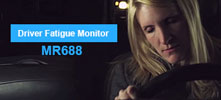Hot News
- <a title="What is Defensive Driving?" href="/info/news/news-469.html">What is Defensive Driving?
- <a title="What are the hazards of fatigue driving?" href="/info/news/aaa.html">What are the hazards of fatigue driving?
- MR688/MR688B Video Of Application In Mining
- A large truck crashed the roadside collision fence due to the driver’s fatigue driving
- What are the characteristics of UWB positioning technology?

Be taken seriously! ---Drowsy driving crashes result in high costs
Headline
According to the National Sleep Foundations 2013Sleep in Americapoll, 60% of adult drivers about 168 million people say they have driven a vehicle while feeling drowsy in the past year, and more than one-third, (37% or 103 million people),
According to the National Sleep Foundation’s 2013 Sleep in America poll, 60% of adult drivers – about 168 million people – say they have driven a vehicle while feeling drowsy in the past year, and more than one-third, (37% or 103 million people), have actually fallen asleep at the wheel! In fact, of those who have nodded off, 13% say they have done so at least once a month. Four percent – approximately eleven million drivers – admit they have had an accident or near accident because they dozed off or were too tired to drive.
The National Highway Traffic Safety Administration conservatively estimates that 100,000 police-reported crashes are the direct result of driver fatigue each year. This results in an estimated 1,550 deaths, 71,000 injuries, and $12.5 billion in monetary losses.
Who is at risk?
Sleep related crashes are most common in young people, especially men, adults with children and shift workers. According to the NSF’s 2012 poll:
Adults between 18-29 are much more likely to drive while drowsy compared to other age groups (71% vs. 30-64, 52% vs. 65+, 19%).
Men are more likely than women to drive while drowsy (56% vs. 45%) and are almost twice as likely as women to fall asleep while driving (22% vs. 12%).
Adults with children in the household are more likely to drive drowsy than those without children (59% vs. 45%).
Shift workers are more likely than those who work in a regular daytime schedule to drive to or from work drowsy at least a few days a month (36% vs. 25%).
Sleep deprivation increases the risk of a sleep-related crash; the less people sleep, the greater the risk.
According to a study by the AAA Foundation for Traffic Safety, people who sleep six to seven hours a night are twice as likely to be involved in such a crash as those sleeping 8 hours or more, while people sleeping less than 5 hours increased their risk four to five times.
A study by researchers in Australia showed that being awake for 18 hours produced an impairment equal to a blood alcohol concentration (BAC) of .05, and .10 after 24 hours; .08 is considered legally drunk.
Other research indicates commercial drivers and people with undiagnosed sleep disorders such as sleep apnea and acute insomnia are also at greater risk for fall asleep crashes.
Nearly three-quarters of adults in America (71%) drive a car to and from work, and many are drowsy drivers, according to NSF’s 2001 Sleep in America poll. More than one-fourth of these respondents (27%) said they have driven drowsy to or from work at least a few days a month, 12 percent drove drowsy a few days a week, and four percent said they drove drowsy every day or almost every day.
Care Drive is a dynamic leader in Vehicle security and convenience products and services. Our company's strategic product driver fatigue monitor MR688 is our new innovation, it is our world patent product under advanced and unique technology. It can also connect with GPS and send fatigue information to fleet management for managers to make better management and save more cost for the enterprise. MR688 has been highly welcomed by the world market since its launch in 2010, we started this product with Military, now many military and government vehicles are using MR688.
MR688 has been applicated and sold in the following areas:
|
l Military |
l Trucking company |
l Mining Safety |
|
l Government |
l Car Manufacturer |
l Car Insurance |
|
l Petrol Company |
l Gas Station |
l Auto 4S shop |
|
l Aviation |
l Subway |
l Company’s fleet |
|
l Auto production line |
l Medical Treatment |
l Steamboat |
For more detail, please check on this page: /product/driver-fatigue-monitor-mr688/ .


